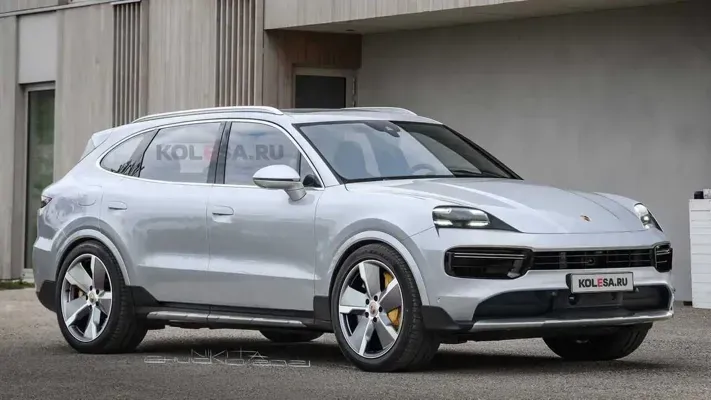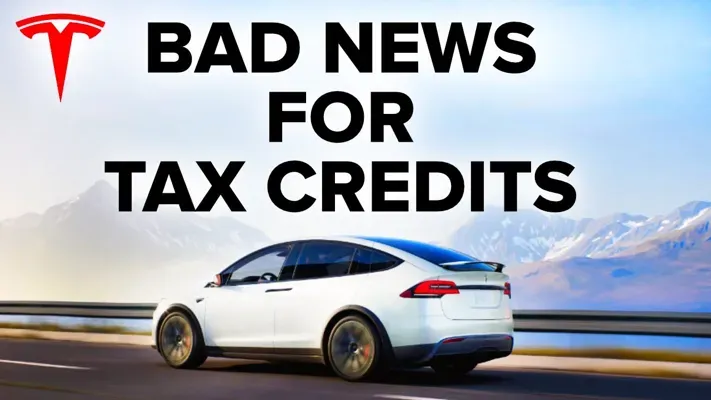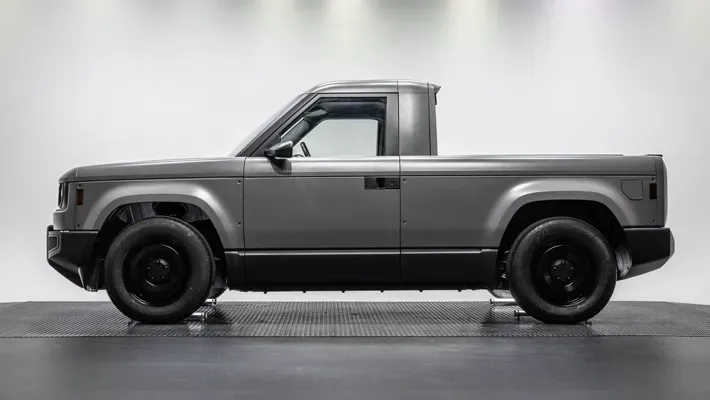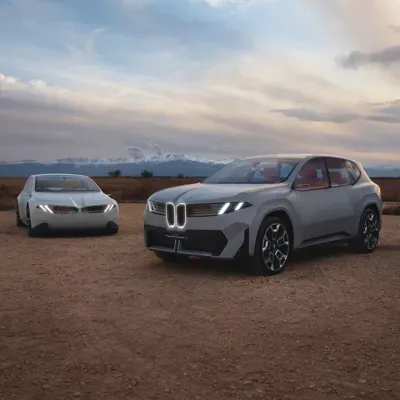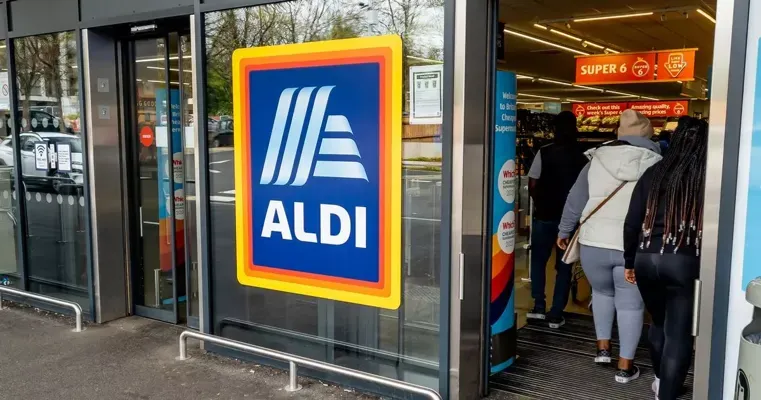The Porsche three-row SUV represents a bold new chapter for the storied brand, blending luxury with practicality and performance. As Porsche plans to launch this innovative vehicle, it is initially focusing on a combustion engine powertrain, steering away from its electric aspirations for now. While enthusiasts eagerly anticipate the potential of the Porsche electric SUV, the company’s current strategy reflects a prudent response to market demands and consumer preferences. The new SUV, often referred to under its internal codename K1, aims to capture a discerning audience looking for a dynamic three-row SUV that doesn’t compromise on Porsche’s high-performance legacy. With shifting priorities in their electric vehicle strategy, Porsche is poised to robustly define the future of its lineup without fully abandoning the pursuit of electrification.
Introducing the new addition to Porsche’s lineup, the upcoming multi-seat Porsche SUV is designed to elevate the brand’s commitment to performance and luxury. This vehicle, which will feature three rows of seating, is set to revolutionize the way families experience Porsche’s renowned driving dynamics. For now, it will debut with a traditional combustion engine and a potential plug-in hybrid variant, reflecting a shift in focus amidst changing consumer preferences. Known internally as K1, this SUV marks a significant moment in Porsche’s evolution as it adapts its electric vehicle strategy according to the current market landscape. This three-row model promises to uphold the brand’s thrilling performance while accommodating the needs of modern drivers.
Introduction to Porsche’s Three-Row SUV Strategy
Porsche is preparing to make a significant shift in its vehicle lineup with the introduction of a new three-row SUV, which is set to elevate its position above the Cayenne. Initially anticipated to be an all-electric offering, the focus has shifted towards a combustion engine and hybrid powertrain. This move reflects Porsche’s response to the current market dynamics, where the uptake of electric vehicles has not met projections. The reconfigured strategy underscores Porsche’s commitment to providing a blend of performance and practicality, particularly for families and those requiring additional space.
The new three-row SUV will cater to a growing segment of consumers looking for spacious and versatile vehicles that do not compromise on Porsche’s signature driving experience. By incorporating a combustion engine variant, the brand aims to appeal to traditionalists and enthusiasts who may still prefer the performance of gas powertrains. Additionally, this approach could serve as a transitional phase for customers as the market gradually shifts towards hybrid and electric vehicles, paving the way for a fully electric option down the line.
The Electric Future: Porsche’s K1 Three-Row SUV
While Porsche’s three-row SUV, codenamed K1, will initially launch with a combustion engine, the long-term vision includes exploring an electric variant. This model is anticipated to leverage Volkswagen Group’s scalable platforms, which facilitate the integration of both electric and combustion systems. As part of Porsche’s electric vehicle strategy, the K1 is designed to embody the performance ethos of the brand, ensuring that electric offerings maintain the driving dynamics that enthusiasts expect.
Despite the current pivot towards combustion, Porsche’s commitment to an electric future remains strong. The K1 will eventually be positioned as part of a broader portfolio alongside popular models like the Taycan and Macan EVs. By developing a three-row electric SUV, Porsche aims to attract a new demographic of consumers looking for sustainable options without sacrificing luxury or performance. The impending launch of the K1 highlights Porsche’s adaptability in navigating a rapidly evolving automotive landscape.
The Impact of Combustion Engine Models Amidst EV Transition
Porsche’s decision to focus on combustion engine models during this transitional phase illustrates the challenges faced by automakers in adapting to market demands. With the introduction of the three-row SUV powered by a traditional combustion engine, Porsche acknowledges consumer hesitations regarding the adoption of electric vehicles. The company’s leadership, including CEO Oliver Blume, has pointed to changing customer demands as a primary factor in this strategy realignment, indicating a thoughtful approach to balancing legacy models with future innovations.
This shift also emphasizes the importance of maintaining a diverse product lineup, as combustion engines remain a preference for many driving enthusiasts. While Porsche is investing in its electric vehicle ambitions, the company recognizes that not all consumers are ready to fully embrace electrification. By continuing to produce models with combustion powertrains, Porsche positions itself to retain its existing customer base while gradually introducing electric alternatives that deliver performance and sustainability.
Porsche’s Electric Vehicle Strategy in the Face of Market Realities
The automotive industry is experiencing a significant transformation, with varying levels of consumer acceptance for electric vehicles across different markets. Porsche’s decision to realign its electric vehicle strategy by focusing on hybrid and combustion models instead of rushing all-electric launches reflects a prudent assessment of these market realities. The company’s current plan indicates a cautious yet responsive approach to changing customer preferences, marking a pivot that could impact how Porsche develops future models like its planned electric K1 SUV.
By actively responding to market trends and customer feedback, Porsche can refine its electric vehicle strategy amid rising competition in the EV sector. Understanding that the transition to electric vehicles will take time, the company aims to build a bridge between traditional combustion engines and advanced electric powertrains, ensuring long-term sustainability and performance. Ultimately, this careful navigation of current market dynamics could help Porsche maintain its competitive edge as consumer preferences continue to evolve.
The Future of Porsche K1: Expectations and Innovations
As anticipation builds around the Porsche K1, expectations are high for a model that not only meets family needs with its three-row layout but also delivers the high-performance experience synonymous with the brand. Positioned as a potential benchmark in the SUV segment, the K1 aims to incorporate advanced technology and design features that align with Porsche’s luxury status. Integrating innovations from the VW Group, the K1 may serve as a missing link in Porsche’s product lineup, blending utility with performance to attract diverse consumers.
While the K1’s combustion engine is the star for now, the groundwork is being laid for a future electric variant that could redefine the expectations for family SUVs. Innovations in battery technology and electric powertrains promise to enhance the model’s appeal, ensuring it provides both sustainable options for eco-conscious consumers and thrilling performance for driving enthusiasts. As Porsche embarks on this journey, consumers can expect a compelling mix of luxury, performance, and environmental considerations in the K1 and its future iterations.
Understanding Porsche’s Customer-Centric Approach
Porsche’s strategies are closely aligned with understanding its customer base, which plays a crucial role in shaping product offerings. With the automotive landscape shifting under the pressures of evolving technologies and consumer preferences, the decision to focus on a combustion engine for the three-row SUV is indicative of the brand’s responsiveness to market feedback. By addressing customer concerns about electric vehicle adoption, Porsche demonstrates a commitment to developing vehicles that fulfill traditional desires while looking towards innovations in electrification.
The company is keenly aware that brand loyalty and customer satisfaction hinge on delivering vehicles that resonate with driver expectations. By prioritizing a combustion powertrain initially, Porsche can reassure existing enthusiasts while fostering interest in future electric models. This approach not only strengthens Porsche’s brand position but also sets up a smooth transition into electrification, ensuring that both legacy and next-generation customers feel valued in the evolving product lineup.
Porsche’s Transition: Challenges and Opportunities Ahead
In navigating its transition from traditional powertrains to electrification, Porsche faces both challenges and opportunities that could shape its future trajectory. The recent shift in focus on the three-row SUV demonstrates the complexities of merging customer preferences with corporate sustainability goals. As the company evaluates its electric vehicle strategy, it must balance the immediate market demands with long-term technological advancements, which could lead to exciting innovations within the K1 and other models.
The transition brings opportunities for Porsche to enhance its reputation as a forward-thinking luxury automaker while navigating the complexities of a competitive marketplace. By leveraging advances in hybrid technology and refining its electric vehicle offerings, Porsche has the potential to emerge as a leader in both the combustion and electric segments. Preparing consumers for a more efficient future, the company is set on an ambitious journey that not only embraces current expectations but also paves the way for revolutionary advancements in driving experiences.
Anticipating Consumer Trends in Porsche’s SUV Market
Understanding and predicting consumer trends is vital as Porsche develops its new three-row SUV. As families seek vehicles with versatility, comfort, and performance, Porsche’s K1 is positioned to meet these growing needs. Insights into what consumers value most in an SUV—such as interior space, cutting-edge technology, and driving comfort—are invaluable for guiding the design and features of the K1, ensuring it resonates with modern buyers.
Additionally, as sustainability becomes an increasingly important factor in purchasing decisions, Porsche must remain alert to consumer attitudes towards electrification. Maintaining a balance between performance and practicality within the K1 and other models can further reinforce Porsche’s commitment to addressing these shifts. By anticipating what consumers desire in SUVs—be it performance, multi-functionality, or eco-friendly options—Porsche can confidently design a vehicle that not only excites but also aligns with contemporary consumer values.
The Road Ahead: Porsche’s Long-Term Vision for the K1
Porsche’s long-term vision for the K1 three-row SUV is one of careful evolution, embracing both combustion and electric vehicle paradigms. As the automotive landscape evolves, the company envisions a product that remains true to the brand’s high standards of performance while adapting to the electric age. The K1 is more than just an SUV; it symbolizes Porsche’s commitment to innovation and responsiveness in a rapidly changing industry.
In the years ahead, as vehicle technology continues to advance, Porsche’s K1 has the potential to become a flagship model representing the best of both worlds. By maintaining strong ties to their roots in combustion engines while fully embracing electric developments, Porsche can create a legacy that honors tradition while innovating for the future. The reflection of Porsche’s identity in the K1 is bound to shape how the brand navigates its future, ensuring that luxury, performance, and environmental consciousness are at the forefront of its offerings.
Frequently Asked Questions
What is the release date for the Porsche three-row SUV?
The Porsche three-row SUV is expected to launch soon with a combustion powertrain, but the exact release date has not been officially confirmed yet.
Will the Porsche three-row SUV have an electric variant?
While the Porsche three-row SUV will initially launch with a combustion engine, there are discussions surrounding a potential electric variant, although it may not be available at launch.
What engine options will the Porsche three-row SUV offer?
The upcoming Porsche three-row SUV is set to be equipped with a combustion engine and potentially a plug-in hybrid powertrain, aligning with Porsche’s current product strategy.
How does the Porsche three-row SUV compare to other Porsche electric SUVs?
The Porsche three-row SUV will be positioned above the Cayenne and will initially focus on combustion engine options, distinguishing it from other Porsche electric SUVs like the Taycan and upcoming Macan EV.
Is the Porsche K1 still planned for production?
The Porsche K1, originally planned as a fully electric three-row SUV, is currently under reassessment, and details about its production or release timeline have become uncertain.
What is Porsche’s strategy regarding electric vehicles?
Porsche is recalibrating its electric vehicle strategy, emphasizing combustion engine models while postponing certain electric models due to changing market demands and consumer adoption rates.
How is the three-row SUV related to Porsche’s overall vehicle strategy?
The Porsche three-row SUV reflects the brand’s commitment to offering diverse powertrain options, including combustion engines, which will complement its electric vehicles as part of a balanced product lineup.
What can we expect from future models of the Porsche three-row SUV?
Future models of the Porsche three-row SUV may incorporate advanced technology from VW Group’s Scalable Systems Platform, potentially allowing for compatibility with both combustion engines and electric powertrains.
How does the postponement of electric models affect Porsche’s customers?
The postponement of certain electric models, including a fully electric three-row SUV, indicates Porsche’s focus on current consumer preferences for combustion powertrains, impacting future offerings in the electric vehicle market.
Are there any significant investments linked to the Porsche three-row SUV’s development?
Yes, the shift in Porsche’s electric vehicle strategy is part of a larger investment, with reported costs of €5.1 billion, as the company adapts to evolving market conditions while launching models like the three-row SUV.

